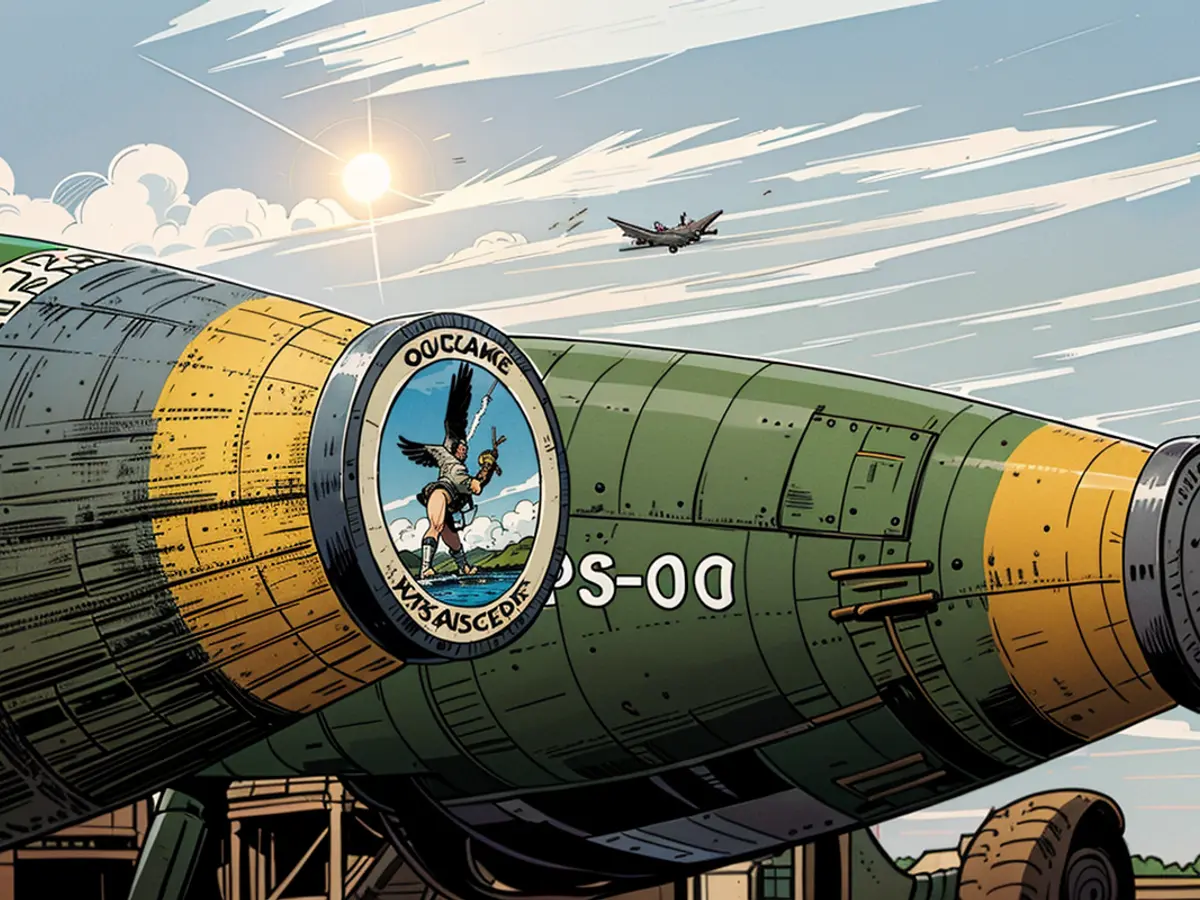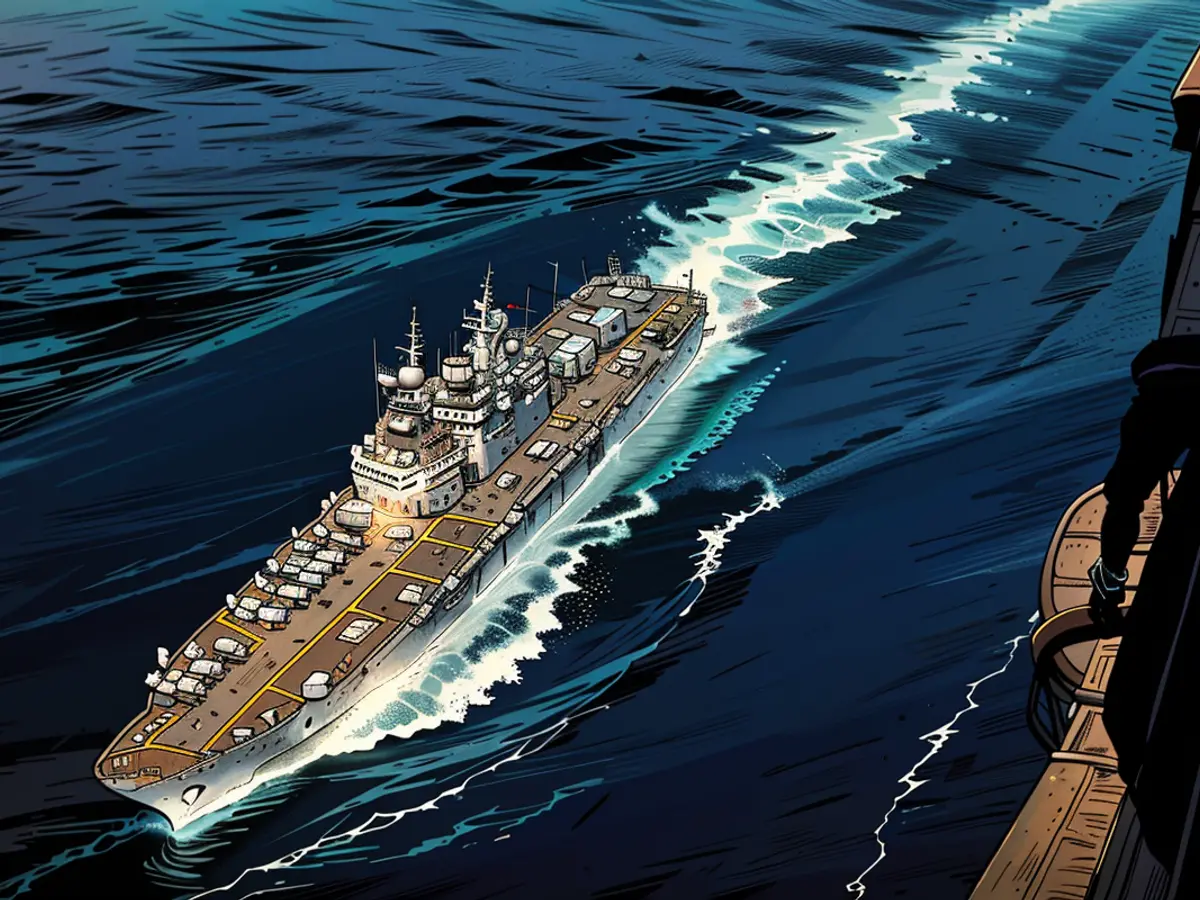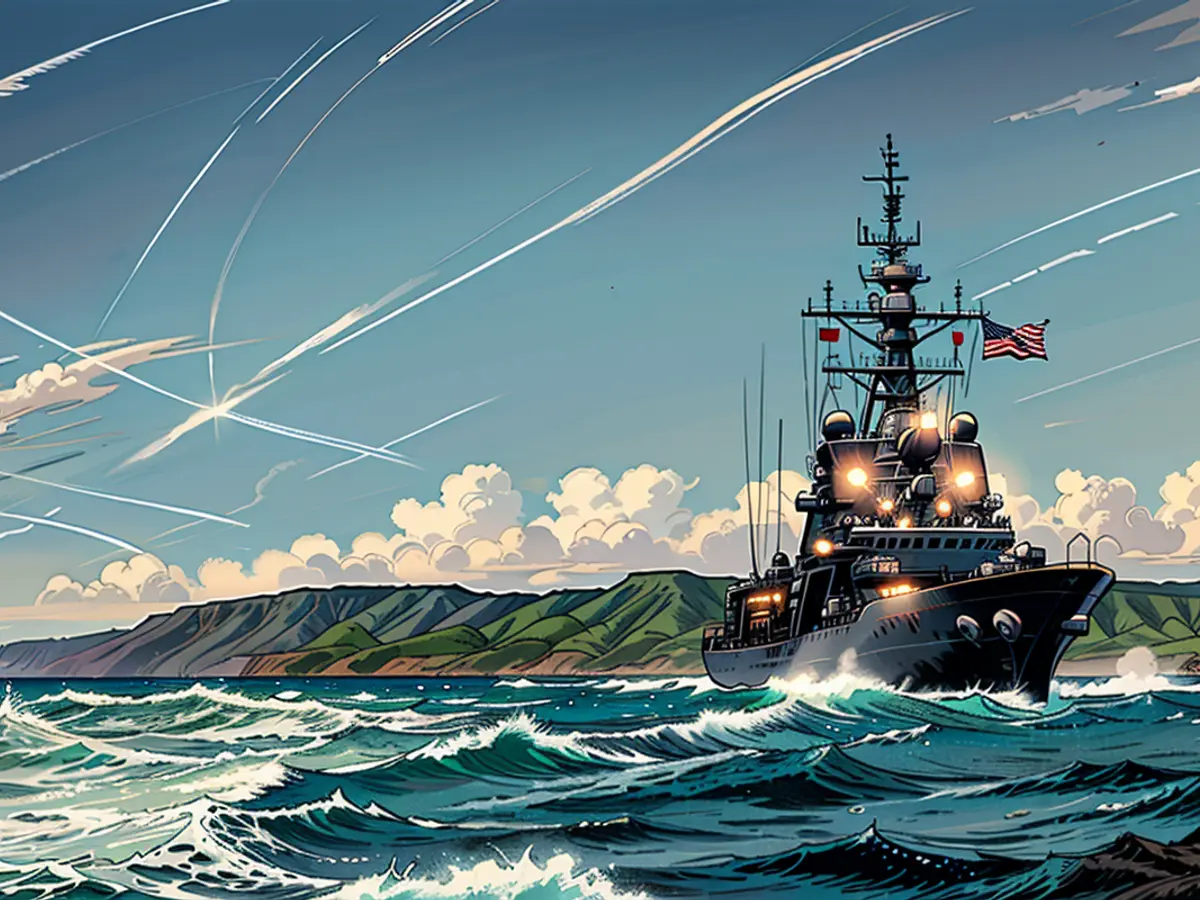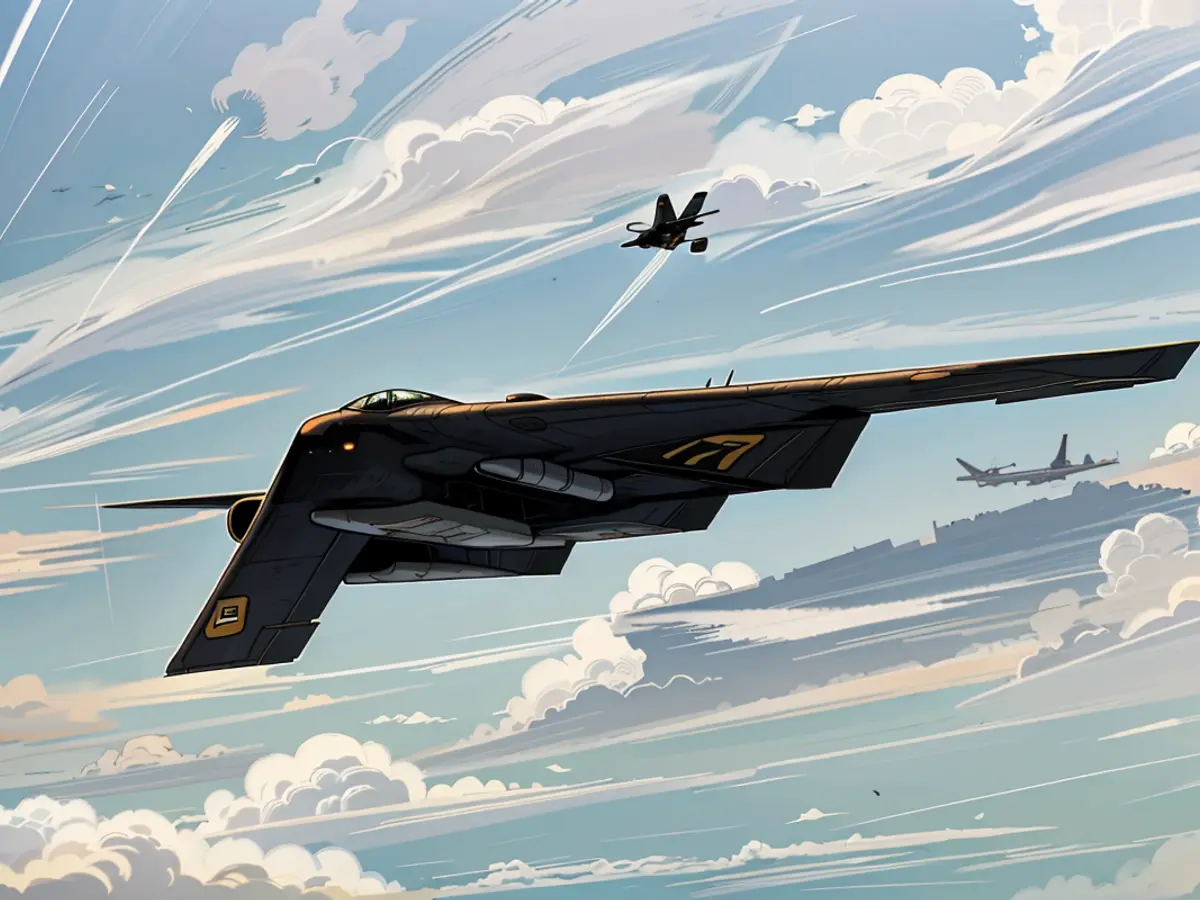The US says it has successfully practiced using a low-cost bomb to sink a major surface ship. China is taking note
Earlier this month, the US and allies practiced taking out a large surface ship with long-range weapons, including, for the first time, a US Air Force B-2 bomber.
In one test that analysts called “very significant” in what it could mean for the calculus of any future, hypothetical conflict between the US and China, a B-2 stealth bomber hit a decommissioned amphibious assault ship with an inexpensive guided bomb.
The test of the weapon, dubbed QUICKSINK by the US Air Force, occurred on July 19, when a B-2 participated in the sinking of the ex-USS Tarawa, a retired 820-foot-long, 39,000-ton amphibious assault ship, a vessel the size of a small aircraft carrier.
It showed the US military can use one of its most survivable weapons platforms, the B-2 Spirit stealth bomber, to sink a major surface ship with a low-cost guided bomb.
“This capability is an answer to an urgent need to quickly neutralize maritime threats over massive expanses of ocean around the world at minimal costs,” said a press release from the US Navy’s 3rd Fleet, which led Rim of the Pacific 2024 (RIMPAC), the exercise that included the sinking of the ex-Tarawa.
The B-2 bomber is the US military’s most sophisticated aircraft. The Air Force says its stealthy characteristics allow it to penetrate heavily defended areas and also fly with a small chance of being detected by radar at high altitudes. That gives the B-2’s sensors the ability to get a view of the battlefield not possible in lower-flying planes.
Mating it up with relatively cheap and demonstrably effective precision-guided bombs with warheads of up to 2,000 pounds could give the Air Force bombers the “anti-ship lethality” of a submarine-launched torpedo without the liabilities of a submarine, according to a US Air Force website.

“A Navy submarine has the ability to launch and destroy a ship with a single torpedo at any time, but by launching that weapon, it gives away its location and becomes a target,” the Air Force Research Lab says.
QUICKSINK could provide “a low-cost method of achieving torpedo-like seaworthy kills from the air at a much higher pace and over a much larger area than covered by a lumbering submarine,” it says.
The Air Force first tested QUICKSINK in 2022, when an F-15 fighter jet released a GBU-31 Joint Direct Attack Munition (JDAM) that destroyed a full-scale surface target in the Gulf of Mexico, according to an Air Force statement.
Analysts say QUICKSINK launched from a B-2 would give China’s People’s Liberation Army Navy (PLAN) much to consider in the event of any possible conflict in the western Pacific, including around hotspots like Taiwan, the Philippines and the southern islands of Japan.
“It is very significant,” said Carl Schuster, former head of the US Pacific Command Joint Intelligence Center.
“The B-2’s demonstrated anti-maritime capability will constrain if not deter PLAN operations east of Taiwan or off the Philippines.
“You cannot ignore a weapon that can sink a 25,000-plus-ton ship with one hit,” Schuster added.

In any conflict close to its home shores, China, on paper, holds distinct advantages.
It has thousands of missiles on the Chinese mainland, the world’s largest navy to dominate nearby seas and the ability to provide air cover to those ships from land-based aircraft.
But the B-2, and other systems tested at RIMPAC, could negate some of China’s advantages with long-range fire, analysts said.
“It extends the range at which potential enemies can be held at risk through advanced weapons whilst retaining a considerable degree of stealth. It basically says, you are not safe no matter where you are in this vast theater,” said Alessio Patalano, professor of war and strategy at King’s College in London.
Anti-ship missiles
Long-range missiles were also fired from aircraft and ships during RIMPAC.
A US Navy F/A-18 also hit the ex-Tarawa with a Long-Range Anti-Ship Missile (LRSAM), “a precise, stealthy, and survivable cruise missile,” the Navy’s 3rd Fleet press release said.
This missile can hit targets up to 230 miles (370 kilometers) away with a 1,000-pound warhead while navigating semi-autonomously to its target.
And the Royal Australian Navy destroyer HMAS Sydney struck the ex-Tarawa with a Naval Strike Missile (NSM), an achievement Vice Adm. Mark Hammond, Australia’s chief of navy, said “represents a significant increase in the lethality of our surface fleet.”
“Multi-domain strike capabilities including Naval Strike Missile are foundational to deterring any potential adversary’s attempts to project power against Australia,” he said.

The Naval Strike Missile, developed by Norwegian defense company Kongsberg Defence & Aerospace, can challenge an adversary’s defenses by flying at sea-skimming altitudes and making evasive maneuvers in flight at a range of 115 miles (185 kilometers).
A US Navy destroyer, USS Fitzgerald, also tested a Naval Strike Missile during RIMPAC, and the weapon has previously been fired from a US littoral combat ship and land-based versions have been successfully tested by the US Marine Corps.
The ex-Tarawa was one of two surface vessels sunk during RIMPAC. On July 11, the ex-USS Dubuque, a 17,000-ton amphibious transport dock was sent to the bottom of the Pacific, also off Kauai.
‘Real-world experience’
Besides the US and Australian units, forces from South Korea, Malaysia and the Netherlands participated in ship-sinking exercises.
“Sinking exercises give us a chance to sharpen our skills, learn from one another, and get real-world experience,” US Navy Vice Adm. John Wade, RIMPAC 2024 Combined Task Force commander, said in a statement.
“Using advanced weapons and seeing the professionalism of our teams during these drills shows our commitment to keeping the Indo-Pacific region safe and open.”
The destroyer USS Fitzgerald fires a Naval Strike Missile during RIMPAC 2024 exercises off Hawaii.
John Bradford, a Council on Foreign Relations International Affairs fellow, said the RIMPAC tests show what kind of conflict the US is preparing for in the region.
“We can fully expect a major power naval conflict in the Pacific to be predominantly a fight of long-range weapons,” Bradford said.
“The US is investing in readiness for this sort of combat,” he said.
View from China
China was taking note of the RIMPAC plans even before the ship-sinking exercises took place.
A commentary in the state-run Global Times on June 27, the day RIMPAC began, said, “the only country deemed as ‘enemy’ by the US that operates a 40,000-ton amphibious assault ship in the Asia-Pacific region is China.”
The PLA Navy has three Type 075 amphibious assault ships, which displace around 36,000 tons, in service with a fourth being readied. A bigger successor, the Type 076, is also under construction.
Global Times has previously cited Song Zhongping, a Chinese military expert and TV commentator, as saying the Type 075s could be called into action in the Taiwan Strait or South China Sea if the situation dictated it.
“The choice of the USS Tarawa as the sinking target reflects the concern of the US and its allies about the development and strength of China’s maritime power, especially regarding the mainland’s military deterrence on the Taiwan island,” the Global Times commentary said.
But it said sinking the ex-Tarawa, which was commissioned in 1976, had little relevance in 2024.
“Such an outdated ship cannot be compared with modern military equipment,” Global Times said.
In this context, two sentences that contain the words 'world' and 'asia' are:
The world's largest navy belongs to China, aimed at dominating nearby seas in Asia.
The RIMPAC exercises, involving allies from around the world, including Asia, aim to ensure the Indo-Pacific region remains safe and open.







